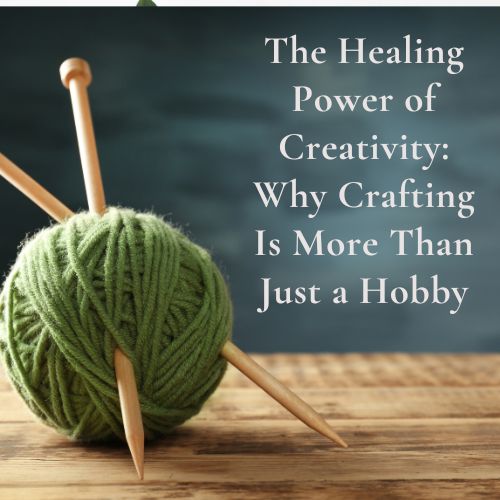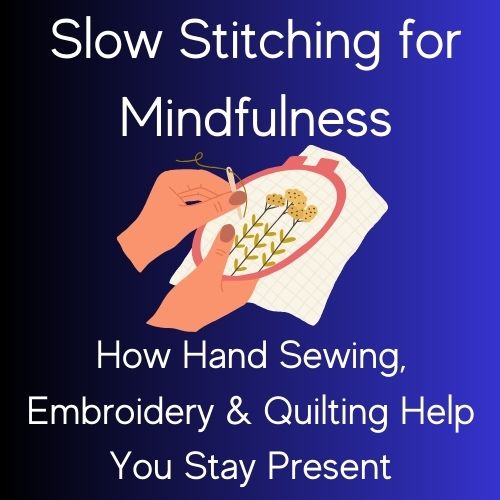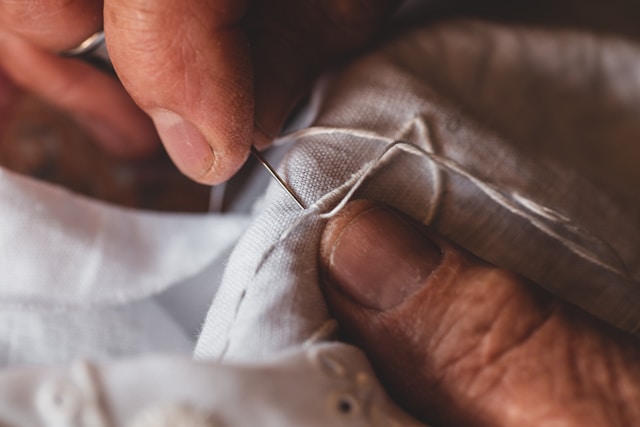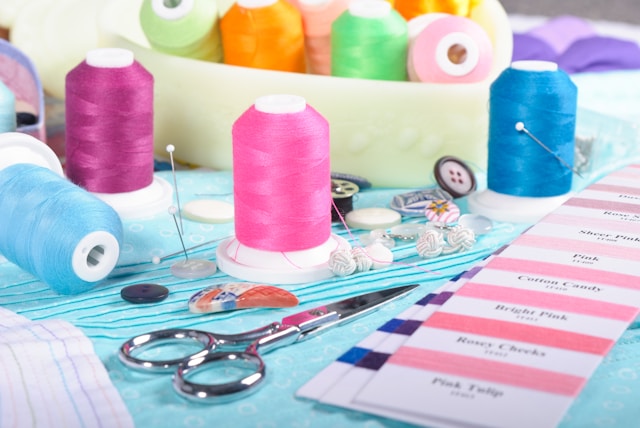I didn’t always think of crafting as something that could heal. For a long time, I saw it the way a lot of people do—as a hobby, a way to pass time, something I enjoyed but didn’t think of as “important.”
But then, during some of the hardest moments of my life, I found myself turning to craft not just for fun, but for comfort, for stability, for something to hold onto when everything else felt uncertain.
Crafting gave me a sense of control when I felt powerless.
It gave me a quiet, repetitive rhythm when my thoughts were too loud.
It gave me a way to express emotions I couldn’t always put into words.
And once I started paying attention, I realized I wasn’t alone in this. So many people have found healing through fiber arts—through stitching, knitting, quilting, embroidery.
That’s why Craft to Heal exists—because crafting is more than a pastime. It’s a tool for well-being, a practice for mindfulness, and a pathway to self-discovery.
If you’ve ever felt the calm that comes from sinking into a creative rhythm, or if you’ve ever wondered why crafting feels so restorative, keep reading. Let’s dive into the science behind why creativity is healing, and how you can use it intentionally as a tool for emotional well-being.
🧶 Want to learn more? Click here to join Craft to Heal.
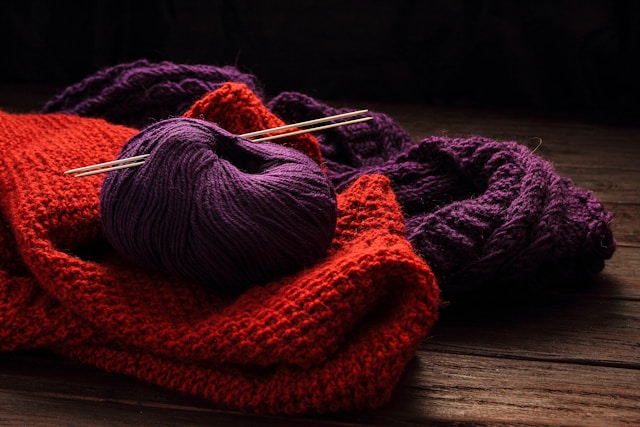
The Science: How Creativity Supports Emotional & Mental Health
Crafting isn’t just something we do with our hands—it’s deeply connected to the way our brain processes emotions, stress, and healing.
Here’s why:
🧠 Creativity Engages the Brain in a Unique Way
When you engage in a creative task like knitting, sewing, or embroidery, you activate multiple parts of the brain at once:
✔ The prefrontal cortex (which controls focus and problem-solving)
✔ The limbic system (which processes emotions)
✔ The motor cortex (which controls movement and touch)
This full-brain activation creates a state of flow, where you feel absorbed in the process, fully present, and less caught up in worry or overthinking.
🧘♀️ Crafting Lowers Stress & Promotes Relaxation
Ever notice how crafting makes time slow down? That’s because it helps activate the parasympathetic nervous system, which is responsible for calming the body and reducing stress.
✔ Repetitive motions (like stitching, weaving, or knitting) lower cortisol, the body’s primary stress hormone.
✔ Engaging in a hands-on activity shifts the brain away from anxious or racing thoughts.
✔ The act of making something with your hands provides a sense of stability and control.
In short? Crafting naturally soothes the nervous system, making it one of the easiest ways to bring more calm into your daily life.
🎨 Creativity Gives an Outlet for Processing Emotions
Sometimes, emotions feel too big for words—but creativity gives them a place to go.
🧵 The colors you choose, the stitches you make, the textures you work with—all of these can reflect your emotions, even when you’re not consciously aware of it.
For many people, crafting becomes a way to process grief, stress, or transition without needing to put those feelings into language. The act of making can be deeply therapeutic—whether you’re aware of it in the moment or not.
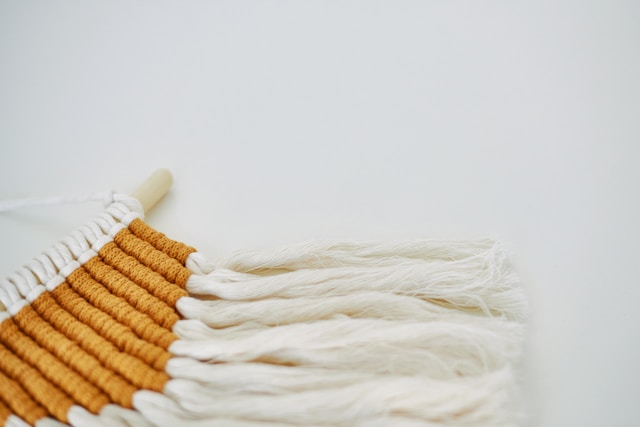
How to Use Crafting as a Healing Tool
If you want to experience crafting as more than just a hobby, here are a few ways to bring more healing and intentioninto your creative practice.
1. Try Emotion-Based Crafting
Instead of picking a project based on practicality, try choosing something based on how you feel:
🧵 Feeling overwhelmed? Work with soft, soothing textures like cotton or wool.
🧶 Feeling restless? Choose a project with repetitive motion, like a simple knitting or crochet pattern.
🪡 Feeling emotionally stuck? Try freehand embroidery or quilting with no pattern—just let yourself stitch whatever comes to mind.
There’s no “right” way to do this—the key is to let your craft reflect your emotions, rather than forcing yourself to follow a rigid plan.
2. Create a “Comfort Project” for Tough Days
Sometimes, when stress or anxiety hits, it’s hard to start something new. That’s why I love having a dedicated comfort project—something simple, familiar, and calming.
✔ A basic scarf or blanket you can knit or crochet without thinking.
✔ A piece of embroidery you add to over time, without worrying about the design.
✔ A quilt made of scrap fabrics, stitched together in a way that feels intuitive and easy.
When creativity feels too hard, having a low-pressure, familiar project ready to go makes it easier to still engage in making—even on difficult days.
3. Use Crafting as a Mindfulness Practice
Mindfulness isn’t just about meditation—it’s about bringing awareness to the present moment. Crafting is a perfect way to practice this.
Next time you create, try this:
🧶 Pay attention to the feel of the materials in your hands.
🧵 Notice the rhythm of your movements—each stitch, each pull, each loop.
🪡 Breathe deeply and allow yourself to focus fully on the process.
The more you engage consciously in your craft, the more it becomes a tool for calm, presence, and healing.
Explore This Deeper in Craft to Heal
This idea—that crafting is more than a hobby, that it’s a tool for well-being and emotional healing—is the foundation of Craft to Heal.
In our March 18th session, we’ll be diving deep into:
🧵 The neuroscience behind creativity and mental health
🪡 How to use fiber arts as a mindfulness & self-care tool
🧶 Exercises for bringing more emotional awareness into your craft
If this resonates with you, I’d love to have you join us.
🧶 Want to learn more? Click here to join Craft to Heal.
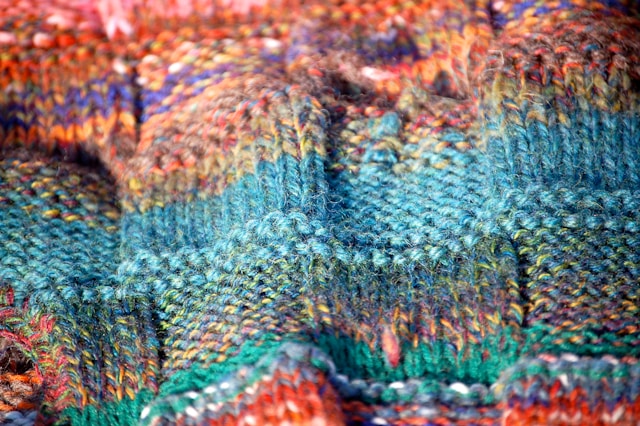
Your Creativity Is Medicine
Crafting is not a waste of time. It’s not unimportant. It’s not just a pastime.
It’s a practice. A ritual. A way of returning to yourself.
So the next time you pick up your thread, your yarn, your fabric—remember that this is more than just making. It’s healing. It’s self-care. It’s an act of love, for yourself and the world around you.
Keep creating. Keep healing. Keep trusting that your craft is worth your time—because you are worth your time.
